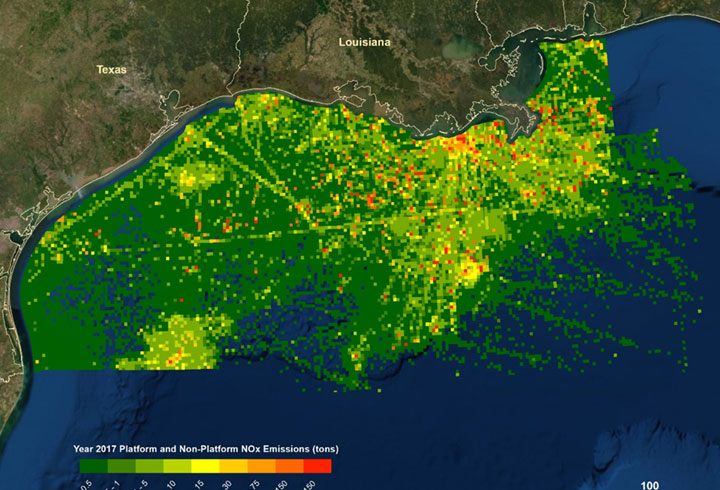Offshore Oil and Gas Production Emissions Inventories

Project Brief
The Challenge
Under the Outer Continental Shelf Lands Act, the Bureau of Ocean Energy Management is responsible for determining whether air pollutant emissions from oil and natural gas production sources in federal waters of the Gulf of Mexico OCS influence the air quality of onshore areas. Under the National Environmental Policy Act, BOEM is also responsible for assessing the cumulative air quality impacts of oil and natural gas production on the GOM OCS. To fulfil these needs, BOEM must compile inventories of air pollutants emitted by oil and gas production on the GOM OCS. Among other uses, these emissions inventories enable BOEM to assess the impacts of OCS oil and gas activities on states and to provide states with the inputs they need to provide their required State Implementation Plan demonstrations to the U.S. Environmental Protection Agency.
ERG's Solution
From 1999 through 2021, ERG supported BOEM’s Gulf of Mexico OCS Region in developing air quality emissions inventories for both platform and non-platform oil and gas offshore production sources in federal waters in the Western and Central Planning Areas of the Gulf of Mexico OCS. These emissions inventories correspond with the EPA’s onshore emission inventories and allow state agencies and regional planning organizations to more accurately perform air quality photochemical modeling for ozone and regional haze as part of their SIPs. The offshore inventories developed by ERG covered:
- Nine pollution categories: carbon monoxide, nitrogen oxides, particulate matter, sulfur dioxide, volatile organic compounds, ammonia, carbon dioxide, methane, and nitrous oxide.
- Emissions from all oil and gas production platforms, whose equipment spans all major air pollutant sources, including boilers, natural gas engines and turbines, vents, flares, glycol dehydrators, pneumatic pumps, pressure level controllers, and fugitives.
- Emissions from all non-platform sources, including mobile sources such as survey vessels and support vessels, vessel lightering, and helicopters. In this category, ERG used Automatic Identification System data to track individual vessel movements and quantify hours of operation for support vessels, survey vessels, pipelaying vessels, drill ships, commercial marine vessels, tankers involved in lightering, and vessels that visit the Louisiana Offshore Oil Port.
Client
Bureau of Ocean Energy Management